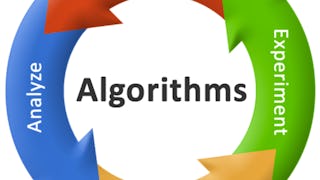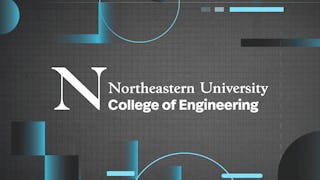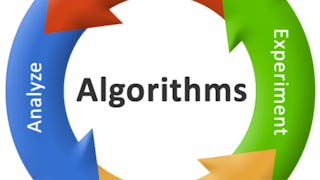This course introduces the broader discipline of computer science to people having basic familiarity with Java programming. It covers the second half of our book Computer Science: An Interdisciplinary Approach (the first half is covered in our Coursera course Computer Science: Programming with a Purpose, to be released in the fall of 2018). Our intent is to demystify computation and to build awareness about the substantial intellectual underpinnings and rich history of the field of computer science.

Enjoy unlimited growth with a year of Coursera Plus for $199 (regularly $399). Save now.

Computer Science: Algorithms, Theory, and Machines


Instructors: Robert Sedgewick
129,981 already enrolled
(739 reviews)
Skills you'll gain
Details to know
10 assignments
See how employees at top companies are mastering in-demand skills

There are 11 modules in this course
This lesson provides information about the course Computer Science: Programming with a Purpose, which is the precursor to Computer Science: Algorithms, Theory, and Machines.
What's included
1 reading
We introduce and study classic algorithms for two fundamental problems, in the context of realistic applications. Our message is that efficient algorithms (binary search and mergesort, in this case) are a key ingredient in addressing computational problems with scalable solutions that can handle huge instances, and that the scientific method is essential in evaluating the effectiveness of such solutions.
What's included
5 videos3 readings1 assignment
Our introduction to data structures is a careful look at the fundamental stack and queue abstractions, including performance specifications. Then we introduce the concept of linked structures and focus on their utility in developing simple, safe, clear, and efficient implementations of stacks and queues.
What's included
5 videos2 readings1 assignment
The symbol table abstraction is one of the most important and useful programmer's tools, s we illustrate with several examples in this lecture. Extending the scientific approach of the previous two lectures, we introduce and study binary search trees, a classic data structure that supports efficient implementations of this abstraction.
What's included
5 videos2 readings1 assignment
The theory of computing helps us address fundamental questions about the nature of computation while at the same time helping us better understand the ways in which we interact with the computer. In this lecture, we introduce formal languages and abstract machines, focusing on simple models that are actually widely useful in practical applications.
What's included
5 videos2 readings1 assignment
In 1936, Alan Turing published a paper that is widely hailed as one of the most important scientific papers of the 20th century. This lecture is devoted to the two far-reaching central ideas of the paper: All computational devices have equivalent computational power, and there are limitations to that power.
What's included
5 videos2 readings1 assignment
As computer applications expanded, computer scientists and mathematicians realized that a refinement of Turing's ideas is needed. Which computational problems can we solve with the resource limitations that are inescapable in the real world? As described in this lecture, this question, fundamentally, remains unanswered.
What's included
5 videos2 readings1 assignment
Every programmer needs understand the basic characteristics of the underlying computer processor being used. Fortunately, the fundamental design of computer processors has changed little since the 1960s. In this lecture, we provide insights into how your Java code actually gets its job done by introducing an imaginary computer that is similar to both the minicomputers of the 1960s and the microprocessor chips found in today's laptops and mobile devices.
What's included
5 videos2 readings1 assignment
Continuing our description of processor design and low-level programming, we provide context stretching back to the 1950s and discuss future implications of the von Neumann machine, where programs and data are kept in the same memory. We examine in detail the idea that we design new computers by simulating them on old ones, something that Turing's theory guarantees will always be effective.
What's included
4 videos2 readings1 assignment
Starting with a few simple abstractions (wires that can carry on/off values and switches that can control the values carried by wires), we address in this lecture the design of the circuits that implement computer processors. We consider gates that implement simple logical functions and components for higher-level functions, such as addition. The lecture culminates with a full circuit for an arithmetic/logic unit.
What's included
5 videos2 readings1 assignment
In this lecture, we provide the last part of our answer to the question "How does a computer work?" by developing a complete circuit for a computer processor, where every switch and wire is visible. While vastly different in scale, this circuit, from a design point of view, has many of the same characteristics as the circuits found in your computer and your phone.
What's included
4 videos2 readings1 assignment
Instructors


Offered by
Explore more from Algorithms
 Status: Free
Status: FreePrinceton University
 Status: Free Trial
Status: Free TrialStanford University
 Status: Preview
Status: PreviewNortheastern University
 Status: Free Trial
Status: Free TrialStanford University
Why people choose Coursera for their career




Learner reviews
739 reviews
- 5 stars
75.94%
- 4 stars
18.37%
- 3 stars
3.51%
- 2 stars
1.21%
- 1 star
0.94%
Showing 3 of 739
Reviewed on Aug 26, 2020
The professor is the best I have ever had! The way he presented the materials was precise and concise. I also loved the historical contexts he often provided.
Reviewed on Jan 19, 2022
Great course that has taught me a lot in the field of computer science. Cheers to Coursera and Princeton for such great knowledge.
Reviewed on Sep 23, 2020
Good introduction, sometimes it's a bit frustrating to have to memorize the op- codes for the quizzes if you don't have the book though. Otherwise very instructional.

Open new doors with Coursera Plus
Unlimited access to 10,000+ world-class courses, hands-on projects, and job-ready certificate programs - all included in your subscription
Advance your career with an online degree
Earn a degree from world-class universities - 100% online
Join over 3,400 global companies that choose Coursera for Business
Upskill your employees to excel in the digital economy
Frequently asked questions
Once you enroll, you’ll have access to all videos and programming assignments.
No. All features of this course are available for free.
No. As per Princeton University policy, no certificates, credentials, or reports are awarded in connection with this course.
More questions
Financial aid available,

